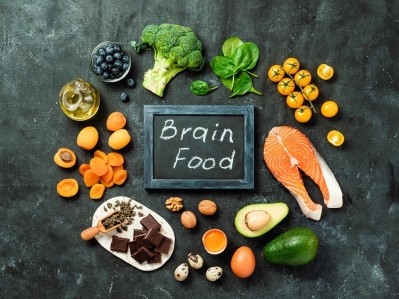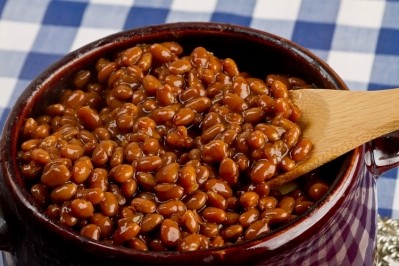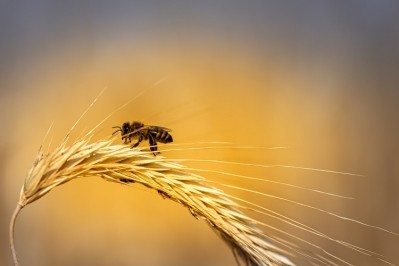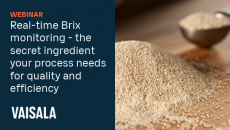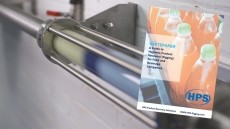Are preservatives killing good gut bacteria?

A recent study on nisin, one of the most commonly used food preservatives and notable for its ability to destroy pathogens, has found that it also has a negative impact on the good bacteria in our gut. This impact could damage the diversity and stability of the gut microbiome.
What is a pathogen?
A pathogen is an organism, which causes disease to its host, the severity which is referred to as the virulence. Pathogens are widely diverse and comprise viruses and bacteria as well as unicellular and multicellular eukaryotes (organisms whose cells have a membrane-bound nucleus). Every living organism is affected by pathogens in one form or another, including the ingredients in the foods we eat.
Why are preservatives used in our food?
Preservatives are used in the majority of packaged foods sold across the world today. The reason for this is simple, to preserve the lifespan of food products, allowing them to be transported and stored over longer periods of time, without spoiling.
Preservatives serve to prevent against the deterioration of food, helping to delay spoilage from micro-organisms such as bacteria and mould, which can cause food poisoning. High-risk foods such as meat and dairy offer the perfect environment for potentially dangerous micro-organisms, meaning the addition of a preservative is essential if the product is to be stored for any length of time prior to consumption.
Spoilage from micro-organisms can also be a result of a chemical reaction, such as oxidation, or a physical reaction, such as air temperature. Preservatives also help to prevent these reactions.
There are alternative ways in which we can preserve foods. Canning, dehydration, smoking, salting, freezing, and certain types of packaging also allow for safe storage, without the risk of spoiling.
What is nisin?
Nisin is a polycyclic antibacterial peptide, produced by the bacterium Lactococcus lactis and is used as a preservative in food. It has 34 amino acid residues, including the uncommon amino acids lanthionine (Lan), methyllanthionine (MeLan), didehydroalanine (Dha) and didehydroaminobutyric acid (Dhb). It is a member of the class of molecules known as lantibiotics.
What inspired the study of nisin on gut bacteria and what do the results tell us?
Nisin, a lantibiotic, is a preservative used in the production of foods including packaged meat such as sausages and dairy products such as cheese. Led by Dr Zhenrun J Zhang, researchers at the University of Chicago decided to study the effect of nisin on commensal gut bacteria, to see how its inclusion in our foods impacts our gut microbiome.
Commensal gut bacteria supplies its host with essential nutrients and helps to defend against opportunistic pathogens, such as disease, prior infection, immunodeficiency and ageing. They also play a role in the development of the intestinal architecture and immunomodulatory processes. In return, the host provides the bacteria with nutrients and a stable environment, creating a symbiotic relationship.
“Nisin is, in essence, an antibiotic that has been added to our food for a long time, but how it might impact our gut microbes is not well studied,” Zhang explains. “Even though it might be very effective in preventing food contamination, it might also have a greater impact on our human gut microbes.”
The research team mined a public database of human gut bacteria genomes and identified genes for producing six different gut-derived lantibiotics, which closely resemble nisin, including four of which were new. They then produced versions of these lantibiotics to test their effects on both pathogens and commensal gut bacteria. The researchers found that while the different lantibiotics had varying effects and did not all perform in exactly the same way, they all killed the pathogens and the commensal gut bacteria. The result was, in effect, indiscriminate.
“This study is one of the first to show that gut commensals are susceptible to lantibiotics, and are sometimes more sensitive than pathogens,” adds Zhang. “With the levels of lantibiotics currently present in food, it’s very probable that they might impact our gut health as well.”
What does the negative effect of preservatives on good gut bacteria mean for the food industry?
Preservatives are an essential part of food production. They maintain the quality of foods and beverages by preventing against spoiling, which in turn helps to cut down on food waste. They also help with the affordability of foods, allowing for safe transportation and the lengthening of shelf-life. Though the industry may look into the use of alternative preservatives, it’s unlikely a change will be made in the near future, as they are serving an important purpose to the industry and to the consumer.
However, consumers may vote with their feet, choosing to avoid purchasing products containing lantibiotics. This could ultimately force a change in the types of preservatives or preserving methods used in the future.
Lantibiotics also have the power to do good
Zhang and his team also studied the structure of peptides in the lantibiotics to better understand how to use their antimicrobial properties for good. This followed on from a recent study by the Pamer Lab, which showed that a consortium of four microbes, including one that produces lantibiotics, helped to protect mice against antibiotic-resistant Enterococcus infections. The team is also studying the prevalence of lantibiotic-resistant genes across different populations of people to better understand how such bacteria can colonise the gut under different conditions and diets.
“It seems that lantibiotics and lantibiotic-producing bacteria are not always good for health, so we are looking for ways to counter the potential bad influence while taking advantage of their more beneficial antimicrobial properties,” concludes Zhang.
Source: Activity of Gut-Derived Nisin-like Lantibiotics against Human Gut Pathogens and Commensals
Published online: 31 January 2024
DOI: https://pubs.acs.org/doi/10.1021/acschembio.3c00577
Authors: Zhenrun J. Zhang, Chunyu Wu, Ryan Moreira, Darian Dorantes, Téa Pappas, Anitha Sundararajan, Huaiying Lin, Eric G. Pamer, Wilfred A. van der Donk
